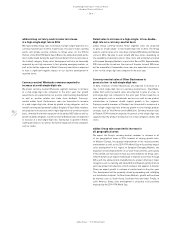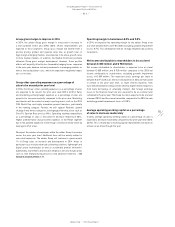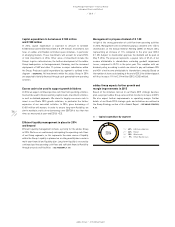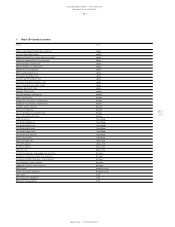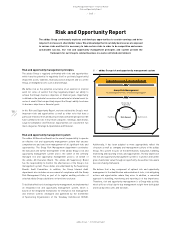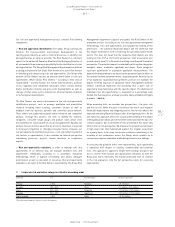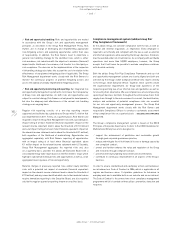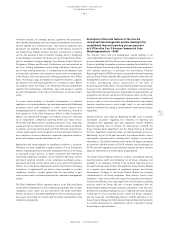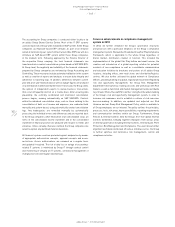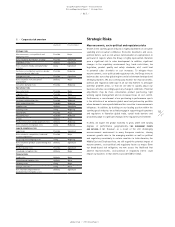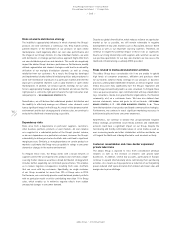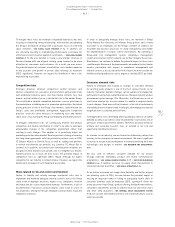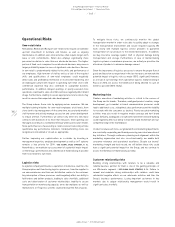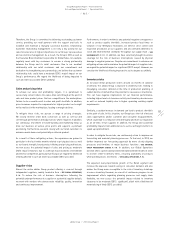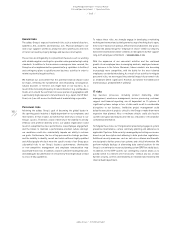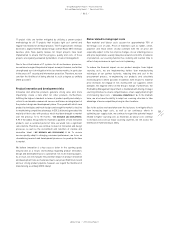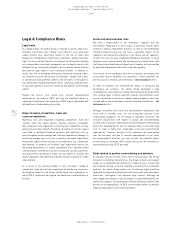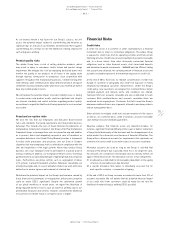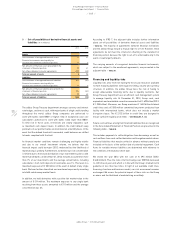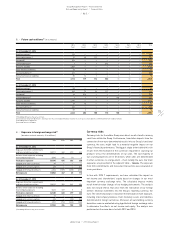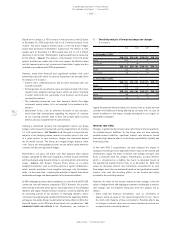Reebok 2013 Annual Report Download - page 168
Download and view the complete annual report
Please find page 168 of the 2013 Reebok annual report below. You can navigate through the pages in the report by either clicking on the pages listed below, or by using the keyword search tool below to find specific information within the annual report.
adidas Group
/
2013 Annual Report
Group Management Report – Financial Review
164
2013
/
03.5
/
Risk and Opportunity Report
/
Strategic Risks
Risks related to distribution strategy
The inability to appropriately influence in which channels the Group’s
products are sold constitutes a continuous risk. Grey market activity,
parallel imports or the distribution of our products on open online
marketplaces could negatively affect our own sales performance and
the image of our Group’s brands. In a few individual markets, we work
with distributors or strategic partners whose approach might differ from
our own distribution practices and standards. This could also negatively
impact the adidas Group’s business performance. Furthermore, weakly
defined segmentation and channel strategies could lead to an unhealthy
utilisation of our multiple distribution channels as well as strong
retaliation from our customers. As a result, the Group has developed
and implemented clearly defined distribution policies and procedures to
avoid over-distribution of products in a particular channel and limit the
exposure to unwanted channels such as grey markets or open online
marketplaces. In addition, we conduct specific trainings for our sales
force to appropriately manage product distribution and ensure that the
right product is sold at the right point of sale to the right consumer at an
adequate price
/
SEE GLOBAL SALES STRATEGY, P. 72.
Nevertheless, we still believe that unbalanced product distribution and
the inability to effectively manage our different sales channels could
have a significant impact on the Group. As a result of the dynamic market
environment and the fast-changing world of online sales, we continue to
evaluate the likelihood of materialising as possible.
Dependency risks
Risks arise from a dependence on particular suppliers, customers,
other business partners, products or even markets. An over-reliance
on a supplier for a substantial portion of the Group’s product volume,
or an over-dependence on a particular customer, increases the Group’s
vulnerability to delivery and sales shortfalls and could lead to significant
margin pressure. Similarly, a strong dependence on certain products or
markets could make the Group very susceptible to swings in consumer
demand or changes in the market environment.
To mitigate these risks, the Group works with a broad network of
suppliers and for the vast majority of its products does not have a single-
sourcing model. Likewise, we utilise a broad distribution strategy which
includes further expanding our controlled space activities. This enables
us to reduce negative consequences resulting from sales shortfalls
that can occur with key customers. Specifically, no single customer
of our Group accounted for more than 10% of Group sales in 2013.
Furthermore, we consistently provide a well-balanced product portfolio
with no particular model or article contributing more than 1% to Group
sales, which enables us to minimise negative effects from sudden
unexpected changes in consumer demand.
Despite our global diversification, which reduces reliance on a particular
market as far as possible, we still remain vulnerable to negative
developments in key sales markets such as Russia/CIS, China or North
America as well as our important sourcing countries. Therefore, we
continue to regard the potential impact of these risks as significant.
Due to our strong relationships with suppliers and customers as well as
our positive expectations for our key sales markets we now assess the
likelihood of materialising as unlikely (2012: possible).
Risks related to media and stakeholder activities
The adidas Group faces considerable risk if we are unable to uphold
high levels of consumer awareness, affiliation and purchase intent
for our brands. Adverse media coverage on our products or business
practices, unfavourable stakeholder initiatives as well as negative social
media discussion may significantly hurt the Group’s reputation and
brand image and eventually lead to a sales slowdown. To mitigate these
risks, we pursue proactive, open communication with key stakeholders
(e.g. consumers, media, non-governmental organisations, the financial
community, etc.) on a continuous basis. We have also defined clear
mission statements, values and goals for all our brands
/
SEE GLOBAL
BRANDS STRATEGY, P. 77
/
SEE OTHER BUSINESSES STRATEGY, P. 86. These
form the foundation of our product and brand communication strategies.
Furthermore, we continue to invest significant marketing resources to
build brand equity and foster consumer awareness.
Nevertheless, we continue to believe that unsubstantiated negative
media coverage, uncontrolled social media activities and stakeholder
activism could have a significant impact on our Group. Despite the
fast-moving and hardly controllable nature of social media as well as
ever-increasing media and other stakeholder activities worldwide, we
still regard the likelihood of being affected to such an extent as likely.
Customer consolidation and cross-border expansion/
private label risks
The adidas Group is exposed to risks from consolidation amongst
retailers as well as the increase of retailers’ own private label
businesses. In addition, several key accounts, particularly in Europe,
continue to expand internationally while centralising their purchasing
activities. As a result, we may experience a reduction of our bargaining
power, reduced shelf space allocation from retailers and lower sales and
margin due to price arbitrage.


